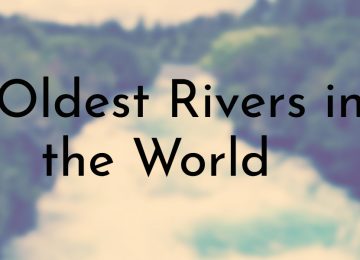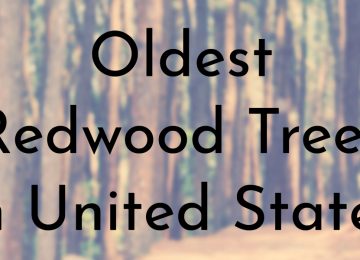The Big Bang, which occurred about 13.8 billion years ago, is considered the beginning of the universe. About 200 million years after the Big Bang, the very first stars (called Population III stars) began to form. While Population III stars have yet to be detected by scientists, the oldest known stars that have been observed were born after the first stars went supernova. These ancient stars, which are all Population II stars, are nearly as old as the universe. As telescope technology advances, the title for oldest star will change and scientists hope that they will soon be able to find the first stars of the universe.
7. Caffau’s Star
Age: ~13 billion years
Distance from Earth: ~4,140 light years
Type: Unknown
Constellation: Leo

SDSS J102915+172927, also known as Caffau’s Star (named for lead observer Elisabetta Caffau), has been dubbed the “impossible star” because of its unique properties. Although another star on this list was known for being the most metal-poor, Caffau’s Star now has this title. The star is made almost entirely out of helium and hydrogen, with an extremely low amount of other chemical elements.
Elisabetta Caffau and her team had been looking for extremely metal-poor stars for over a decade before they discovered this one. Caffau said that she was surprised to actually find a star in the “forbidden zone” of the star formation model. She and her team hope to find other similar stars in the future.
6. HD 122563
Age: ~13 billion years
Distance from Earth: 770 ± 60 light years
Type: Red giant
Constellation: Boötes

HD 122563 is unique among the other earliest known stars. While all Population II stars are metal-poor, this star is considered extremely metal-poor. Its low heavy metal content was first noticed in 1963 and for over two decades HD 122563 was the most metal-poor star known. Its composition has been crucial in understanding galactic chemical evolution.
The star is also unique for being the brightest metal-poor star, making it one of the only Population II stars that is visible to the naked eye. Around 2005, researchers discovered seven new neutron-capture elements in HD 122563: Niobium, Molybdenum, Ruthenium, Palladium, Silver, Praseodymium, and Samarium.
5. Sneden’s Star
Age: 13 billion years
Distance from Earth: 15,300 light years
Type: Main sequence star
Constellation: Aquarius

BPS CS22892-0052, which is called Sneden’s Star after it’s lead observer Chris Sneden from the University of Texas at Austin, is another ancient star in the galactic halo of the Milky Way. The star belongs to a class of stars known as ultra-metal poor stars, specifically the rare subclass of neutron-capture enhanced stars.
It is about 13 billion years old and was discovered using the Curtis Schmidt telescope at the Cerro Tololo Inter-American Observatory in Chile. Since about 1995, researchers led by Chris Sneden have found an abundance of 53 chemical elements in the star, which is second in number to the Sun.
4. HE 1523-0901
Age: 13.2 billion years
Distance from Earth: ~7,500 light years
Type: Red giant
Constellation: Libra

HE 1523-0901 is the oldest known star in our galaxy, the Milky Way. The star’s estimated age is about 13.2 billion years. In 2007, Anna Frebel used the European Southern Observatory (ESO)’s Very Large Telescope (VLT) to look for stars in our galaxy that were thought to be old.
Frebel used the ESO’s VLT to measure the abundance of the radioactive elements uranium and thorium in HE 1523-0901. She then used a technique similar to the carbon-14 method, which is used to date archaeological finds, to determine the age of HE1523-0901. This was the first time that researchers used thorium and uranium with three other elements europium, osmium, and iridium to successfully figure out a star’s age.
Just like the oldest starts in our universe you can find the Youngest Stars in the Universe in our article.
3. SMSS J031300.36-670839.3
Age: 13.6 billion years
Distance from Earth: 6,000 light years
Type: Main sequence star
Constellation: Hydrus

HE 1523-0901 is the oldest known star in our galaxy, the Milky Way. The star’s estimated age is about 13.2 billion years. In 2007, Anna Frebel used the European Southern Observatory (ESO)’s Very Large Telescope (VLT) to look for stars in our galaxy that were thought to be old.
Frebel used the ESO’s VLT to measure the abundance of the radioactive elements uranium and thorium in HE 1523-0901. She then used a technique similar to the carbon-14 method, which is used to date archaeological finds, to determine the age of HE1523-0901. This was the first time that researchers used thorium and uranium with three other elements europium, osmium, and iridium to successfully figure out a star’s age.
2. BD +17° 3248
Age: ~13.8 ± 0.4 billion years
Distance from Earth: ~1,000 light years
Type: Subgiant
Constellation: Hercules

BD +17° 3248 is another early Population II star (also known as metal-poor stars) that resides in the halo of the Milky Way galaxy. The star’s age is estimated to be about 13.8 billion years with an uncertainty of 4 billion years. This means that like other old stars, it formed not long after the beginning of the universe.
In 2002, a group of scientists discovered that BD +17° 3248 had gold, marking the first time that gold had been discovered in a star other than our Sun. The researchers said that while every star probably has trace amounts of gold, this was the first time that they were able to confirm the element’s existence. They added that because of BD +17° 3248’s age, this gold is representative of the first gold made in the universe.
1. HD 140283
Age: ~14.5 ± 0.8 billion years (at least 13.2 billion years)
Distance from Earth: 190 ± 2 light years
Type: Subgiant
Constellation: Libra

The star designated at HD 140283 is currently the oldest known star in the galaxy. HD 140283 is so old that it has been dubbed the Methuselah star by the media. Researchers say that the star could be as old as 14.5 billion years, but this would make it older than the calculated age of the universe, which is about 13.8 billion years old. However, recent calculations have lowered the star’s age to at least 13.2 billion years, which overlaps with the universe’s age.
The star was born during what is known as the second generation of stellar creation. Due to its age, studies of HD 140283 helps scientists learn more about the early universe.











